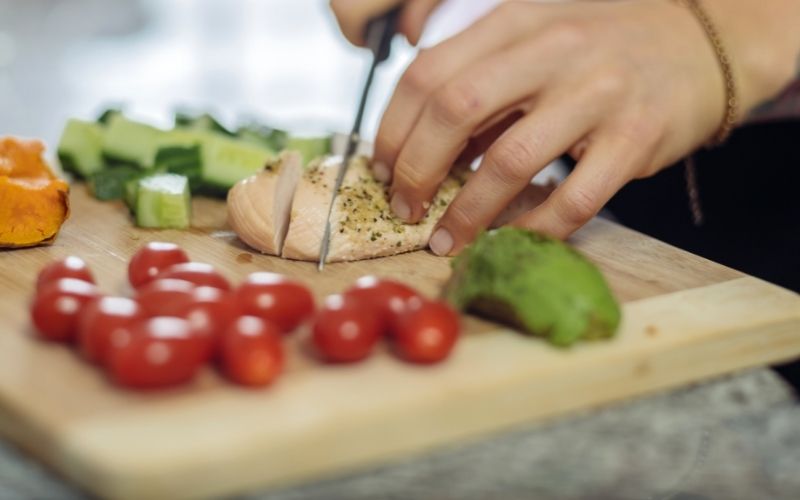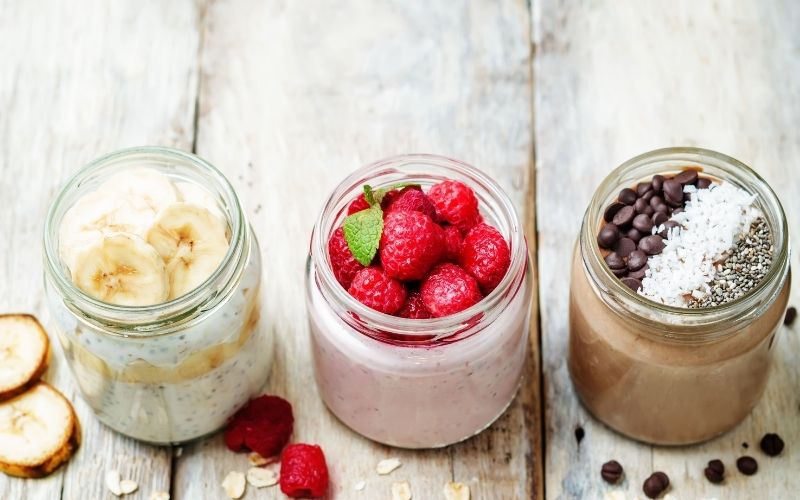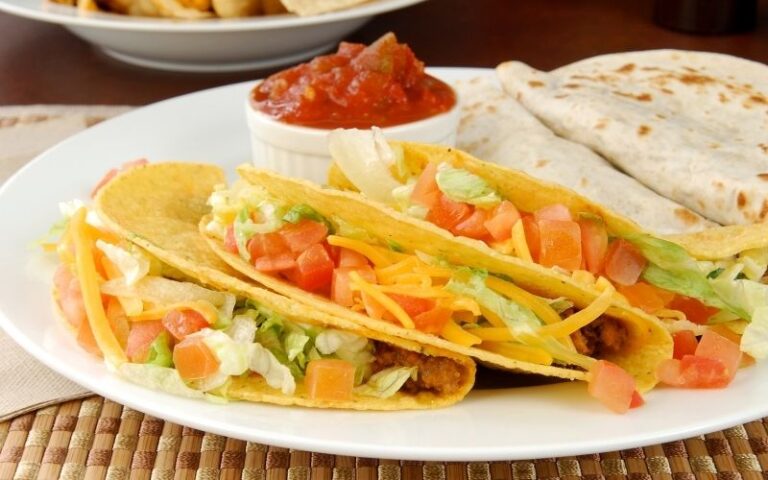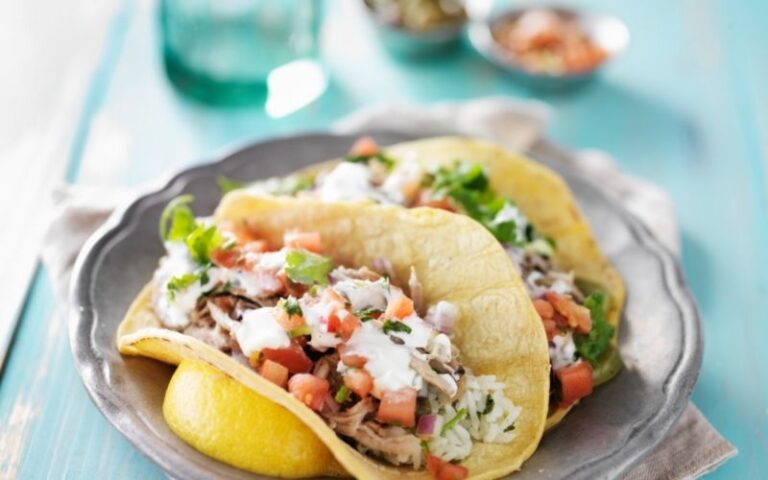How to Get Started Meal Planning and Meal Prepping: A Beginner’s Guide
I’m in the trenches with you, Mom. I know how hard it is to find time to cook for your family. Between carpools, homework, and soccer practice there’s not a lot of free time left over after work! That’s why I wrote this blog post about meal planning and meal prepping for busy moms – because I want to help take some of the stress out of your day so you can enjoy being with your kids more when they are home from school or playing outside!

Table of Contents
Meal Plan & Prep For Busy People
If you’re like many people, making your own nutritious meals every day is a challenge because of your hectic schedule.
Why not give meal planning and food preparation a try instead of just giving in and ordering pizza or grabbing fast food several times a week?
Here are some things to consider about each of these alternatives so you can save time, money, and still prepare good meals for your family every day.
What is Meal Planning?
Before you can begin meal prepping your food, you must first plan your meals. So basically when you planning your meals for the week you’re going to focus on recipes you can prep ahead of time!
Meal planning (or menu planning) just means you’re planning what meals to feed your family over the next few days – some people even plan for two to four weeks at a time! But I recommend just planning for the coming week when you’re just getting started.
Your meal plan can be as detailed or as simple as you’d like. I personally like to meal plan for all three meals including snacks each day, but lots of moms just plan the main meal (usually supper) for each day.
If you’re new to meal planning, the more meal ideas you make note of, the better off you’ll be when you go to actually prepare those meals.
By meal planning first, you’ll know what you want to meal prep and approximately how much time you’ll need to set aside to prep those meals.
This meal planning step will save you time and energy – plus a lot of frustration – by ensuring you aren’t running back to the grocery store when you realize you don’t have ingredients on hand for a meal you want to make.
So before we talk about meal prepping, let’s take a quick look at how meal planning works in my house. You can do things the way I do if you want – but whatever works best for you is what’s best!
Keep in mind there’s lots of room for changing things up to meet your own family’s needs.
How Many Weeks to Plan For
Decide how many weeks you want to meal plan for ahead of time. As I said, I usually just plan for the coming week, but some moms like to meal plan for several weeks in advance.
This really depends on a number of things. Some things you should consider are:
- How much time do you have for meal planning and prepping?
- How often do you like to make new recipes?
- What can you afford to spend at the grocery store planning food each week?
- How much room do you have in the refrigerator and freezer?
If you do plan for 3 or 4 weeks ahead of time, you may not want to do all of your shopping at once. Or you might! You can decide what works best for you and experiment with it.
But if you’re just starting out, if you’re a new wife or a new homemaker, meal planning can take some practice to really get the hang of it.

Write down everything you expect your family to eat for the following week including breakfast, lunch, supper, snacks, and desserts.
Your meal plan should include leftovers you expect to have, lunches you need to pack for school or work, and anything extra you may need to have on hand for potlucks, dinners with friends, or other special occasions.
It includes meals you will prepare at home with leftovers, lunches your kids and you will bring to work or school, and any extra items you need, such as bringing brownies to the local potluck or any other special occasions.
How to Start Meal Planning Today
If you aren’t sure how to begin planning your meals – and believe me this is a common problem when you first get started! – you can make it easier by taking inventory of what’s already in your kitchen.
I know my grown kids (in their twenties) ask me for ideas for what to make all the time, so if you feel a little overwhelmed by meal planning, know you aren’t alone. It does take time! You can get the hang of it. I promise!
So, begin by taking stock of everything in your pantry, refrigerator, and freezer. Write everything down and think about what recipes or meals you can make with what you already have on hand.
Once you’ve thought of a few recipes you can make with the ingredients you have in your pantry, you can make a list of things you need to purchase from the store to complete a recipe and items you need to round out the meal.
For instance, you may have all of the ingredients for making homemade rolls, so you know you don’t need to pick up a pack of store-bought rolls to go with soup this week!
Once you have a good idea of what you already have on hand, begin thinking of different meals you know your family likes to eat. If you’re a new wife and you’re not sure what your husband would like to eat, just ask him!
And asking your kids to help you brainstorm some ideas is a great way to get them involved and a great way to know what they want to eat – within reason of course!
It’s also important to think about your schedule when meal planning. If you know you’ll be rushed to get dinner on the table before baseball practice, plan for an easy meal or choose a recipe for the slow cooker.
How to Be Detailed in Your Meal Plans
Try to write down as much information as you can about what meals you’ll be preparing during the week. If you know you’ll have leftover taco meat on Tuesday night, think of another recipe you can incorporate those leftovers into on Wednesday or Thursday night – or even use those leftovers in the next day’s lunch!
In other words, make a note of what leftovers you expect to have and incorporate them into your meal plan.
By doing this, you’ll save time preparing meals and money buying food and less food will be wasted.
Finally, after writing down all of the meals you plan to prepare, make a grocery list with all of the ingredients you need to purchase that aren’t already in your pantry.
Leaving Room For Flexibility Throughout the Week
I love meal planning. It saves my sanity on a daily basis! However, like with any plan, sometimes things just don’t go according to plan. There will be days when things don’t go as planned and you don’t prepare meals you thought you would.
That’s okay!
You don’t want to feel frustrated. That’s why it’s good to think about your expected schedule for the week when meal planning. But even if you’ve planned as carefully as possible, there just will be days when you end up making something entirely different from what’s on your menu.
Make sure to leave some room for flexibility when you plan your meals and give yourself permission to change things up sometimes!
Planning your meals should make your life simpler not the other way around!
Include Leftovers in Your Plan
I mentioned this above, but when planning your meals for the week, think about what leftovers you might have and incorporate those into another meal during the week.
At the same, it’s a great idea to actually plan for leftovers. For instance, if you know you need chicken for a casserole and chicken later in the week for a salad, you can cook the chicken for both recipes at the same time.

How is Meal Prepping Different?
Meal planning and meal prepping aren’t exactly the same thing. And folks often get the two ideas confused. Meal planning is just the process of deciding what your family will be eating each day of the week.
When you meal prep, you take the ingredients you’ve purchased from the store and prepare the recipes or parts of the recipes in advance to save time later in the week.
Types of Meal Prepping
There are two basic elements to meal prepping.
- Washing and chopping fruits and vegetables or putting ingredients for meals into containers or baggies
- Cooking recipes for a meal and putting them in meal prep containers and/or freezing them ahead of time
You can do one or both of these things depending on how much time you wish to save later in the week.
Ask yourself this question: Do I want to simply reheat my meals or do I want to just have all the prep work done beforehand to save time while cooking?
Some folks like to just prep all the vegetables by chopping them up, pre-measuring rice, or adding snacks or lunch items to baggies that can be used during the week.
Some people like to actually cook the casseroles, pre-cook their meats, and either store them in the fridge or put them into the freezer to thaw and reheat later.
I like to do a little bit of both.
What Containers to Use for Meal Prepping
When prepping your meals, it’s important to choose the right containers for the purpose you have intended.
Different containers are meant for storing foods in the freezer, others might be perfect for storing prepped meals in the fridge, and others may be meant to keep your fruits and veggies fresh for a longer period of time.

Be careful about which containers you choose. Here are some of my best recommendations for food storage containers:
1. Choose containers with airtight lids.
Make sure your containers have air-tight lids to keep your food fresher longer.
If you plan to use Rubbermaid containers or other “Tupperware” style containers, you can test their airtightness by filling them with water, putting the lids on, and turning them upside down to see if any water leaks out.
Some of my favorite airtight containers:
2. Try storing items in mason jars.
Probably my favorite storage container for meal prepping is using mason jars. Mason jars are great for certain foods and meals.
You can prep salads in mason jars, overnight oats, homemade soup, and more!
I love the wide-mouth containers best and I like to use a canning jar funnel to help pour dishes like soup into the mason jars.
If you want to pack salads in a mason jar, be sure to put the denser ingredients on the bottom of the jar and the more delicate items (those that will wilt or get crushed) toward the top of the jar. Put the salad dressing in first (before all the other ingredients) or keep the dressing in a separate, smaller container.
3. Be careful with plastic storage items.
If you choose to use plastic containers for your meal prepping, be sure to buy plastic containers that are refrigerator, freezer, microwave, and dishwasher safe. And make sure the plastic you are buying is free of BPA or any other toxic chemicals.
4. Consider casserole dishes that work for baking and storage.
If you are cooking entire recipes like a casserole (think lasagna, enchiladas, baked spaghetti, etc.), you’ll want to use multi-purpose casserole dishes. Make sure that they can go from the freezer to the oven safely!
And be sure to allow glass baking dishes to cool before placing them in the freezer so they don’t crack.
Tips For Meal Prepping
When you are new to meal prepping, there are a few other things you may want to keep in mind. Here are a few simple tips that will help you save time when prepping meals for the week.
- Cook all your meat at once.
- Label every container with the name of the recipe and date. (especially when freezing)
- Make note of what you plan to do with leftovers.
- Choose recipes with similar ingredients that can be prepped for multiple meals.
- Freeze “dump and go” meals in freezer bags with ingredients that can go right into the slow cooker.
Meal Ideas For Prepping
Here are some easy meal ideas that you can incorporate into your meal planning and meal prepping:
Put together different overnight oatmeal jars.
Overnight oats are so easy to make and are a great idea for a quick and healthy breakfast on the go. You can easily meal prep overnight oats for each day of the week!

To give yourself variety, add different toppings to your overnight oats for each day. A few ideas you could consider:
- cinnamon and sugar
- fresh fruits and berries
- raisins
- granola
- maple syrup or brown sugar
- nuts and seeds
- dried fruits
Roast your vegetables beforehand.
Prepping vegetables for your week’s lunches or supper, you can wash, chop, and roast all of your vegetables at the same time. Just choose veggies that have about the same cooking time and roast them together on a sheet pan.
Then, place the roasted vegetables in containers, add them to prepped meals, or even freeze them.
Use a vegetable spiralizer instead of pasta.
If you want to incorporate more veggies into your diet and less empty carbs, you can try using a vegetable spiralizer instead of pasta. This works so well for meal prepping!
You simply take vegetables such as zucchini or squash and use the spiralizer to make “pasta.” Just spiralize them at the beginning of the week and you’re ready to make quick and healthy meals at your convenience.
To make healthy, low-carb meals and meal prep at the same time, consider using a vegetable spiralizer. This takes vegetables like zucchini and squash and creates pasta out of them. Spiralize your veggies on a Sunday, then save them for the week’s ‘pasta’ meals.
Cook all of your meat, then freeze portions for each meal.
Cook or bake all of your meat when meal prepping to save time later in the week. Then, either freeze the cooked meat or add it your recipes for meal prepping. You can even cook some of your meats ahead of time in the slow cooker.
Keep salad veggies and toppings in one container.
When meal prepping salads, you can either prepare your veggies by washing and chopping or slicing them on your meal prep day. Then, add them to individual containers or go ahead and put together salads in mason jars like we talked about above.
The next time you’re feeling overwhelmed by the never-ending list of things to do, don’t forget that meal planning and prepping can help take some of the pressure off.
Planning for meals or snacks ahead of time not only saves money but also helps relieve stress so your family doesn’t have to worry about what’s for dinner later in the evening.
I hope you found this beginner’s guide to meal planning and meal prepping helpful. I know it will help you simplify your day and organize your time if you just start!
Plus, meal planning and prepping can help you provide healthier meal options for your family because you won’t be as rushed for time. Thanks for reading. If you have any questions, feel free to comment below. I’d love to hear your thoughts below!





